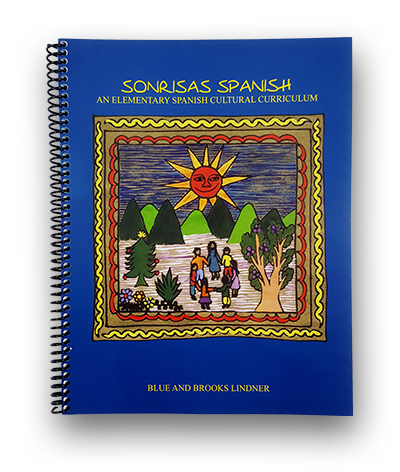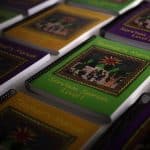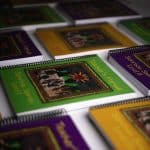
The Sonrisas Spanish Curriculum integrates the development of intercultural competence into its lessons. It is an ideal tool for teachers aiming to cultivate not only language proficiency but also cultural awareness in students. Through its thoughtful structure, incorporation of authentic cultural experiences, and alignment with the ACTFL World-Readiness Standards for Learning Languages, Sonrisas offers teachers a robust framework to guide students in becoming competent global citizens.
Intercultural competence refers to the ability to communicate effectively and appropriately with people from different cultures. According to ACTFL, intercultural competence is developed through understanding both language and culture, enabling learners to function in various social and cultural contexts. The Sonrisas Spanish Curriculum, designed to introduce Spanish through engaging activities and meaningful cultural exploration, helps students build this competence in a natural and enjoyable way.
One of the key features of the Sonrisas elementary Spanish curriculum is its deep integration of cultural learning alongside language acquisition. The curriculum emphasizes that learning a language is not just about grammar and vocabulary; it’s about engaging with the worldviews and practices of the cultures that speak the language. The Sonrisas curriculum recognizes that intercultural competence goes hand-in-hand with language competence.
Each level of the Sonrisas curriculum incorporates cultural lessons that are carefully designed to introduce students to the everyday practices, values, and perspectives of Spanish-speaking countries. For instance, in Sonrisas Level I, students learn basic greetings, colors, and family vocabulary while also being introduced to cultural celebrations such as El Día de los Muertos and Las Posadas. These lessons foster early awareness and appreciation for diverse cultural practices, which is essential for developing intercultural competence.
In Sonrisas Level II, the cultural themes build on the foundational awareness developed in Level I by offering students a broader exploration of cultural perspectives. In the unit, A Global Perspective, students expand their worldview by learning about geography, directions, and the diverse environments of Spanish-speaking regions. The Celebrating Diversity unit promotes understanding of cultural practices, encouraging students to appreciate similarities and differences across cultures. These units not only teach language but also foster empathy and open-mindedness, crucial elements in developing intercultural competence.
In Sonrisas Level III, middle school Spanish students engage more deeply with culture through units focused on themes like La primaria en México and El carnaval de Barranquilla. These units not only teach language structures but also encourage students to explore the cultural practices and historical contexts of these events. Students reflect on the similarities and differences between their own experiences and those of Spanish-speaking communities. By learning to ask questions about cultural practices and products, students develop the ability to view the world from multiple perspectives—a key aspect of intercultural competence.

The Sonrisas Cultural Curriculum enhances intercultural competence by immersing students in culturally rich lessons that foster a deeper understanding of Spanish-speaking countries. This supplemental curriculum introduces students to a variety of cultural themes—historical events like El Dieciséis and El Cinco de Mayo, and distinctive cultural themes like tapas in Spain, the rain forest in Costa Rica, and the pampas in Argentina.
These themes are not presented as isolated facts but are integrated into storytelling, art projects, music, and hands-on activities, allowing students to connect emotionally and cognitively with the material. By engaging with these authentic cultural experiences, students learn to appreciate both the diversity and the commonalities across cultures, an essential component of developing intercultural competence. Through repeated exposure and reflection on these themes, Sonrisas students cultivate an ability to navigate cultural nuances, building empathy and a well-rounded worldview that align with ACTFL’s intercultural standards.
The ACTFL’s World-Readiness Standards for Learning Languages serve as a guiding framework for the Sonrisas curriculum, particularly in fostering intercultural competence. ACTFL emphasizes five key goal areas—Communication, Cultures, Connections, Comparisons, and Communities—that are integral to developing language proficiency and intercultural skills.
In Sonrisas, students are constantly engaging with these standards. They develop Communication skills through interactive activities, role-play, and storytelling, which allow them to use language in meaningful contexts. More importantly, the cultural content incorporates communicative activities as well, so students connect their language skills to real-world cultural practices.
The Cultures standard is at the heart of the Sonrisas approach. From the beginning, students investigate the practices, products, and perspectives of Spanish-speaking cultures. For example, learning about Mexican food origins or the traditions surrounding La siesta helps students understand not only the vocabulary but also the cultural significance of these practices. This aligns perfectly with ACTFL’s emphasis on using language to explore and reflect on the relationship between cultural practices and perspectives.
One of the standout features of the Sonrisas curriculum is its use of authentic materials and sensory-based learning. The curriculum incorporates children’s literature, authentic storybooks, music, and art, which provide rich cultural contexts for language learning. According to ACTFL, using authentic resources is a powerful way to expose students to the products and perspectives of the target culture. The Sonrisas lessons consistently use books written for native Spanish speakers, traditional songs, and cultural celebrations.
Additionally, the curriculum engages students’ senses, making cultural learning a multi-dimensional experience. Activities like tasting traditional foods during lessons on El Día de los Muertos, or exploring the sounds of Cuban music, provide students with immersive experiences that go beyond textbook learning. This kind of sensory engagement helps students form lasting emotional connections to the language and culture, which is crucial for developing deep intercultural understanding.
The Sonrisas curriculum encourages students to reflect on their own culture in relation to the Spanish-speaking cultures they are learning about. This reflective practice, aligned with the Comparisons standard from ACTFL, helps students gain insights into both their own cultural identity and that of others. By comparing customs like Halloween and El Día de los Muertos, or exploring how family dynamics differ between the United States and Latin American countries, students begin to see cultural practices as part of a broader human experience.
Moreover, this reflective process fosters critical thinking. Students are prompted to ask questions about why certain practices exist and what they mean within their cultural context. This critical engagement is a key component of intercultural competence. It moves students beyond surface-level understanding and into deeper cultural empathy.
Ultimately, the goal of the Sonrisas Spanish Curriculum is to build not just language learners, but globally aware citizens who can navigate diverse cultural landscapes with confidence and respect. By introducing students to the richness of Spanish-speaking cultures from an early age and encouraging ongoing exploration in the later levels, Sonrisas provides a strong foundation for lifelong intercultural competence.
For teachers, the curriculum offers a clear pathway to guide students in this journey. Well-structured lessons align with best practices in both language acquisition and cultural education. As students progress through Sonrisas’ levels, they become more adept not only in Spanish but also in understanding and appreciating the diverse cultures that make up the Spanish-speaking world.
The Sonrisas Spanish Curriculum is an invaluable tool for developing intercultural competence in elementary Spanish and middle school Spanish students. Through its thoughtful integration of cultural content, sensory-rich activities, and alignment with ACTFL standards, Sonrisas helps students build the skills they need to communicate effectively and empathetically in a globalized world.


